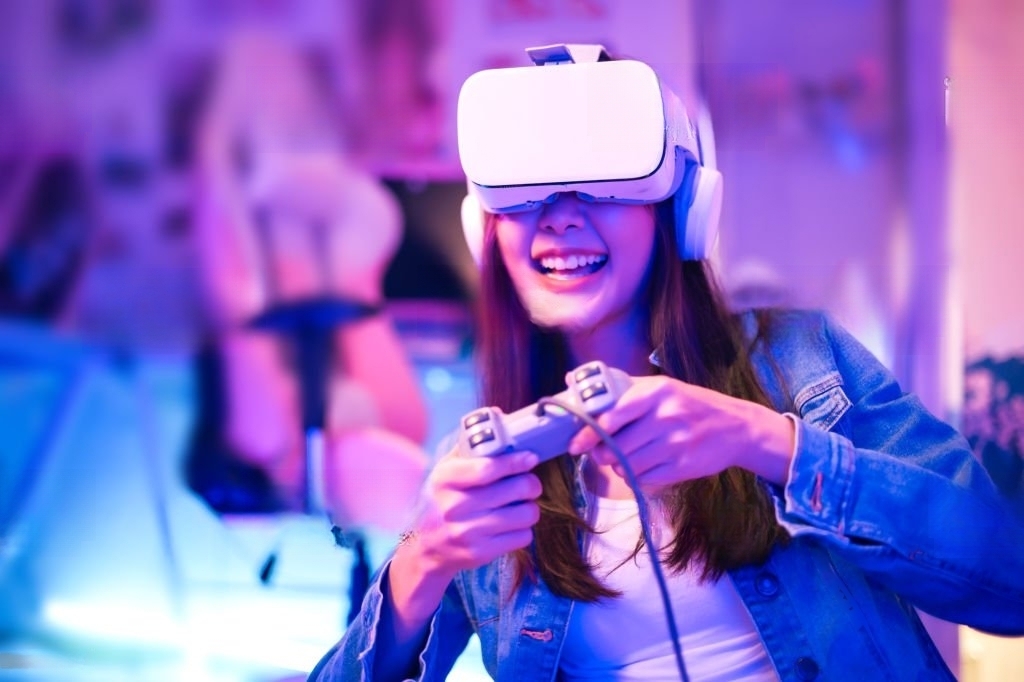Virtual reality (VR) is an emerging technology that has the potential to revolutionize the way we interact with the world around us. It is a computer-generated simulation of a three-dimensional (3D animation) environment that can be interacted with using special electronic equipment, such as a headset with a screen or gloves with sensors. The technology creates a sensory experience that can be similar to or completely different from the real world.
VR has various applications in fields such as entertainment, healthcare, education, and research. In the entertainment industry, VR is already being used to create immersive gaming experiences, allowing players to enter and interact with virtual worlds. VR gaming has become increasingly popular, providing players with a more immersive and interactive gaming experience. VR has also been used in the film industry to create 360-degree movies, allowing viewers to experience the movie as if they were there. In healthcare, VR is used for therapy and rehabilitation to help patients overcome phobias or recover from injuries. For example, VR can be used to simulate a real-life situation that triggers a patient’s fear or anxiety, allowing them to confront and overcome it in a safe and controlled environment.
VR can also be used to help patients recover from injuries by providing a virtual environment that simulates everyday activities, allowing them to practice and build confidence before returning to real-life situations. In education, VR can provide a more engaging and interactive learning experience by allowing students to explore and interact with virtual environments. VR has the potential to revolutionize the way we learn by providing immersive and engaging experiences. For example, students can explore historical sites or scientific phenomena in a way that is not possible through traditional textbooks.
VR can also provide a safe environment for students to practice skills, such as surgery, before performing them on real patients.
In research, VR can simulate complex scenarios that would be impossible or dangerous to recreate in the real world. For example, astronauts can use VR to simulate spacewalks, providing them with a safe environment to practice and prepare for the real thing. VR can also be used to simulate natural disasters or other emergencies, allowing researchers to study human behavior and decision-making under stress.
The technology behind VR is constantly evolving, with advancements in graphics, displays, and interactive equipment. This is leading to the development of more realistic and immersive virtual environments. In recent years, VR has gained popularity and has become more accessible to consumers. This has led to the development of more affordable & friendly VR equipment, such as Google Cardboard. Additionally, VR has been integrated into social media platforms, allowing users to share their VR experiences.
CTV publicizing gives exact focusing on capacities, empowering promoters to convey video advertisements to explicit families or segment portions. Furthermore, the accessibility of promotion upheld web-based features presents a chance for organizations to contact a more extensive crowd without the requirement for conventional business breaks.
Man-made brainpower (simulated intelligence) and Mechanization: Improving Productivity and Viability Man-made reasoning and computerization are changing how advanced video promotions are made, enhanced, and conveyed. Simulated intelligence controlled calculations can examine huge measures of information to recognize designs, upgrade promotion execution, and make constant acclimations to advertisement crusades.
Computerized apparatuses can help with making customized video advertisements at scale, lessening creation expenses and time. These instruments can produce dynamic promotion content in light of client information and inclinations, guaranteeing that every watcher gets a customized insight.










